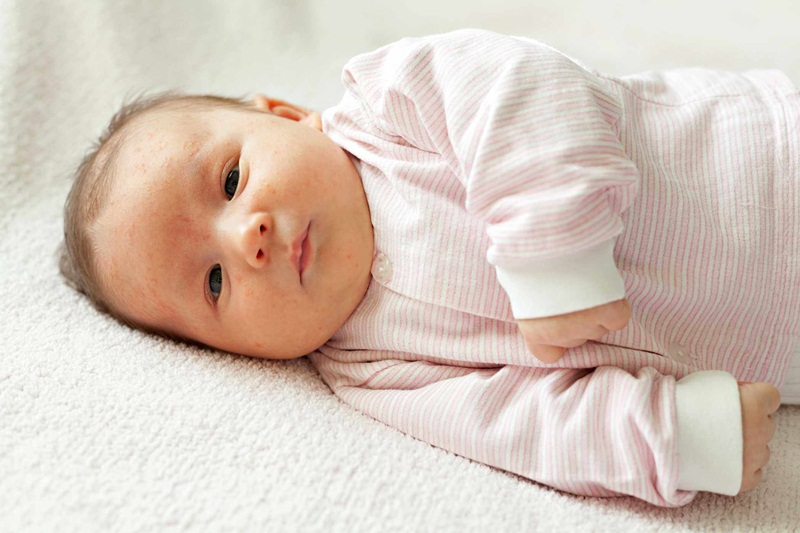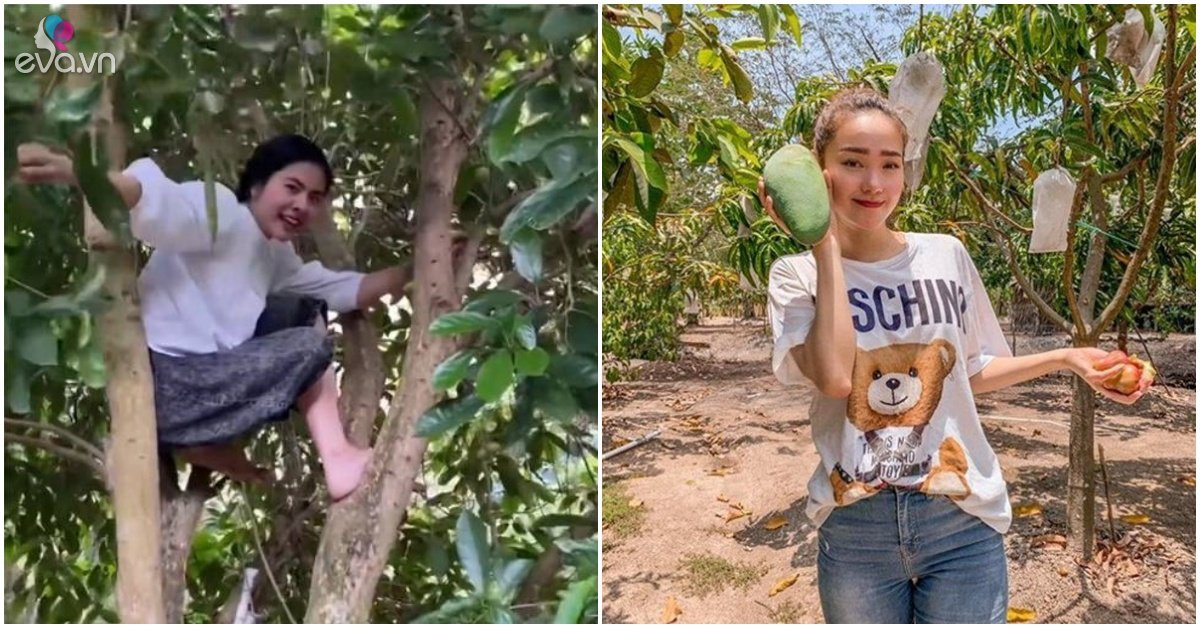Causes of colds in children
Colds are usually caused by an infection in the mouth, throat, or nose (upper respiratory tract), which is caused by a virus. These viruses can stay in the air or on surfaces for short periods of time, making them highly contagious by breathing or contact.
Children with colds can be transmitted from many different sources. (Illustration)
In addition, children with colds can be spread by people who have symptoms such as sneezing, runny nose, or cough. Or a child can also get an infection if he touches a surface contaminated with the virus, then puts his hand on his mouth and nose, allowing the virus to enter inside.
Signs that your child has a cold
Usually, the most noticeable signs when children have a cold are sneezing and runny nose, which are caused by cold viruses that are already present in the child’s throat and nose. Just parents who are negligent in taking care of young children can inadvertently create conditions for bacteria to grow in the mucus that accumulates in the chest and nose. If the child unfortunately has a cold, the child’s immune system is weak, so it is easy to “knock down”.
Children are more likely to catch colds several times a year, especially when the weather changes. To help children recover quickly, mothers need to pay attention to child care. If the child is well protected and cared for, the cold can go away on its own when all the mucus containing the virus is expelled. In case the child’s resistance is too weak, the virus can cause secondary infections leading to many complications such as acute ear infections, asthma attacks, sinusitis, sore throats…
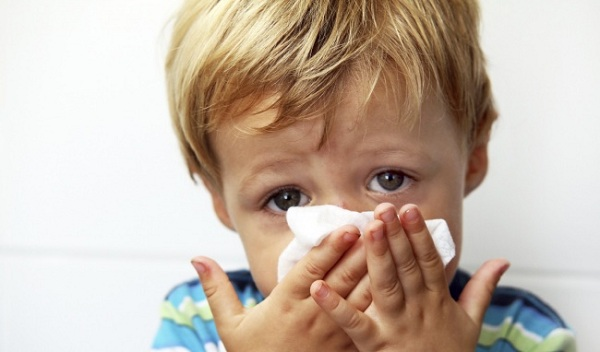
Cough, sneezing, runny nose, can be signs when a child has a cold. (Illustration)
Should children with colds take a bath?
Many parents often worry about the problem of water exposure that will make their child’s illness worse and take longer to heal. Many people believe that children with colds, especially coughs and runny noses, should not bathe because they may make them sicker and take longer to recover.
However, mothers should still bathe the baby to help keep the baby’s body dry, clean and comfortable. The thing to note is how to shower and how long to take a bath. A warm bath for your baby will be very good for him at this time. Bathing will help wipe away sweat and dirt from the baby’s body, avoiding infections and skin diseases.
In addition, steam also has a very good decongestant effect in children, helping them relax and breathe easier because the mucus in the nose has been diluted by the steam.
When bathing a child with a cold, the mother needs to bathe in a well-ventilated room, can turn on the warm water first or use a heater to make the room warmer, only bathe the baby for about 5 to 10 minutes, when getting out of the water, it is necessary to dry the child’s body quickly with a large, clean soft towel. After bathing, the mother should limit the child’s exposure to cold, windy weather.
Children with colds and vomiting are not worried?
Children, especially children under 2 years of age, who cannot yet spit or blow their nose can usually swallow all of the nasopharyngeal secretions. This makes the baby’s stomach in a state of fullness and bloating, which makes it easy for the child to catch a cold and vomit. In addition, children who cough a lot or cry a lot are also prone to vomiting. When a child vomits due to a cold, it often causes concern for parents.
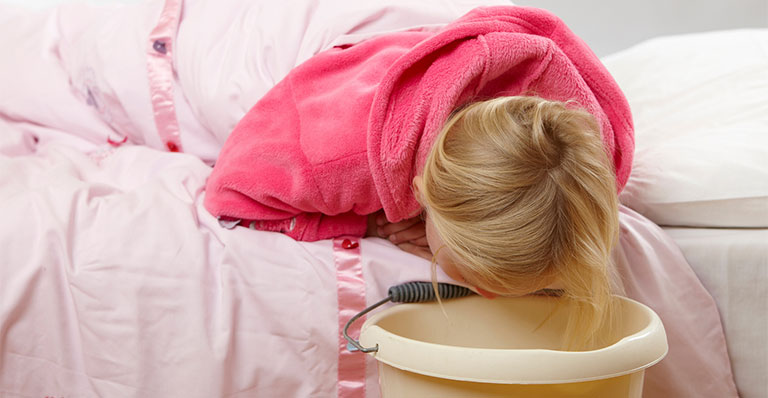
Children with colds and vomiting often worry parents. (Illustration)
However, the first thing parents need to do is to always keep a calm attitude to observe the baby’s expressions. In addition, parents should:
– Rehydrate and electrolytes for the baby according to the doctor’s instructions, so give the child a little drink because drinking too much can also cause vomiting in the child.
– Let children rest, limit physical activity, relax psychologically.
– Give children snacks and small meals, easily digestible foods such as bananas, minced meat, soft bread…, limiting fat or spices. In addition, children should not eat too full.
– Do not feed your baby for 30-60 minutes as it may make the condition worse.
What to do when a child has a cold?
– Add more water for children: When a child has a cold, he or she may have a fever and feel more thirsty. Therefore, parents need to encourage their children to drink lots of water. In infants, severe dehydration can occur with signs such as dry lips, no tears when crying, soft spots that appear to be indented, decreased activity, urinating less than usual. The mother should breastfeed the baby as much as possible.
– Clear the nose if the child has a stuffy nose: Nasal sprays are generally not recommended for young children. Instead, you should use a mist humidifier to increase the humidity of your baby’s room. In addition, using physiological saline also helps thin mucus to flow out more easily. This is very useful before feeding and before going to bed.
– Soothes cough: For children over 1 year old, you can use a little honey to treat cough instead of medicine, about 2-5ml/time. According to experts, honey may be safer and more effective than cough medicines.
– Give your child more rest: Getting plenty of rest will help your child recover quickly. Wear comfortable clothes, avoid thick blankets or layers as it can make your baby hotter.
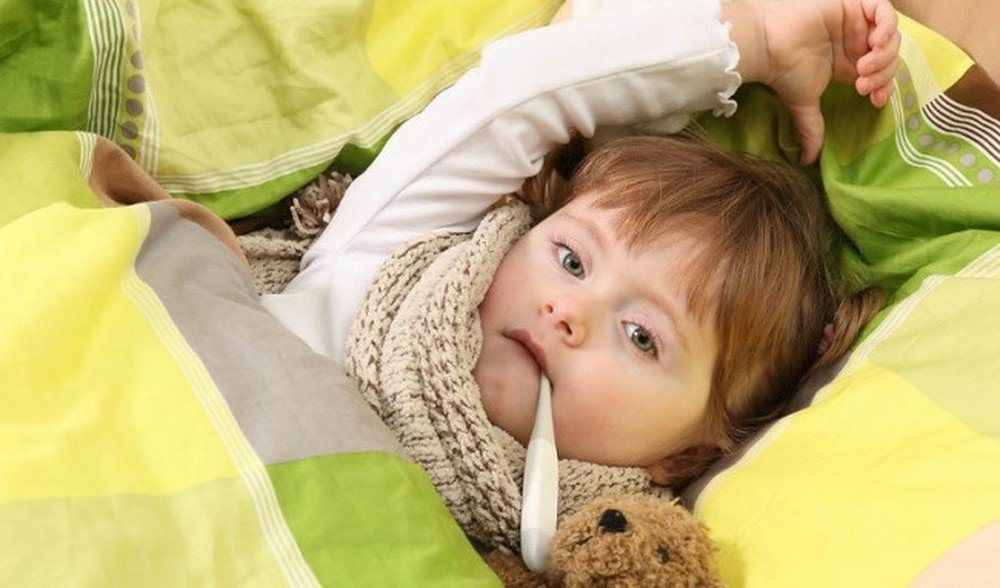
Mothers should let children rest more when they have a cold. (Illustration)
What should children with a cold eat?
Mothers should add the following foods to increase their baby’s resistance when they have a cold:
– Chicken soup or porridge: Has the effect of helping to clear the respiratory tract, helping to relieve nasal congestion more than other dishes. Adding some ingredients such as onions and ginger will help your baby heal faster.
– Milk: It is an indispensable source of water and nutrients to help children increase resistance.
– Citrus fruits, tangerines: Children over 1 year old can use fruit juices rich in vitamin C such as lemon juice, orange juice…before cold symptoms appear or they will feel better and recover faster.
– Vegetables that increase resistance: Blueberries, broccoli, kale, red onions… all contain certain amounts of antioxidants that help your baby fight off the common cold.
– Yogurt: Foods that contain healthy bacteria, promote digestive health and help prevent stomach disease.
– Carrots and sweet potatoes: Being rich in beta-carotene, when supplementing with these foods, the body will convert organic compounds into vitamin A – a vitamin necessary to maintain a healthy immune system.
When does a child with a cold need to see a doctor?
– The child has a fever over 38 degrees Celsius (for babies under 3 months old) and over 39 degrees Celsius (for babies under 6 months old).
Children show no signs of improvement after a few days of having a cold.
The child feels short of breath or has a persistent cough.
Your baby has signs of an ear infection or signs of ear irritation.
Your baby’s nasal discharge is green or yellow.
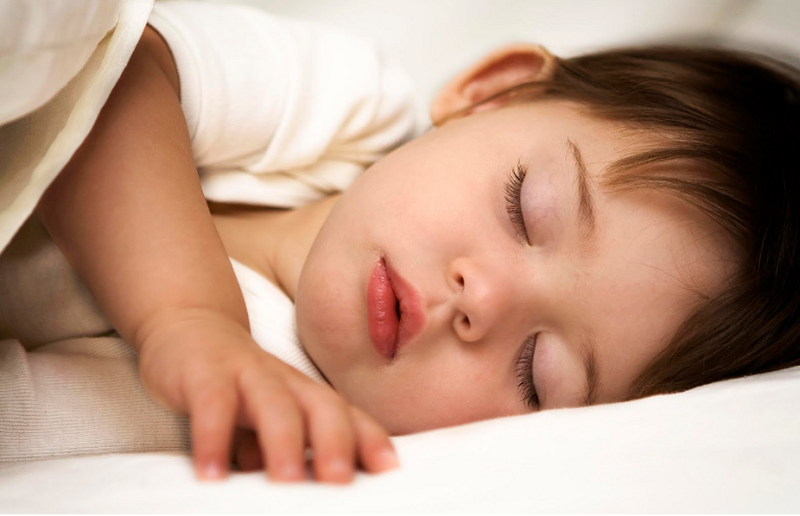
If the child shows signs of high fever that does not go down, please take the child to the doctor. (Illustration image)
Mothers should absolutely not give oral medications to children unless prescribed by a doctor and prescribed an appropriate dose. If used arbitrarily will bring dangerous side effects to the baby’s health.
Prevention of colds in children
– Always ensure the baby’s personal hygiene. If your child is an adult, teach them to wash their hands before eating and after playing with animals.
– Do not let your baby come into close contact with people who have a cold, flu or suspect a cold.
– Teach children to cover their hands when coughing or sneezing.
– Always remind children not to touch their eyes, nose and mouth. Do not suck your fingers or bite your nails.
– Clean the living room, toy room or baby’s furniture regularly.
– If you go out, you should bring a bottle of hand sanitizer for your baby.
at Blogtuan.info – Source: Eva.vn – Read the original article here
